
PL-900: Microsoft Power Platform Fundamentals
PDFs and exam guides are not so efficient, right? Prepare for your Microsoft examination with our training course. The PL-900 course contains a complete batch of videos that will provide you with profound and thorough knowledge related to Microsoft certification exam. Pass the Microsoft PL-900 test with flying colors.

Curriculum for PL-900 Certification Video Course
| Name of Video | Time |
|---|---|
 1. Introduction |
2:00 |
 2. 1, 2, 3, 4, 5, 6. The business value of Power Platform services |
8:00 |
 3. Curriculum |
6:00 |
| Name of Video | Time |
|---|---|
 1. Downloading Power BI Desktop |
5:00 |
 2. 40. Identify available types of data sources including Microsoft Excel |
4:00 |
 3. Creating our first visualization |
7:00 |
 4. 39. Describe and implement aggregate functions |
6:00 |
 5. 31. Identify and describe uses for visualization controls - basic types |
5:00 |
 6. 31. Identify and describe uses for visualization controls - advanced types |
4:00 |
 7. 32. Describe types of filters |
9:00 |
 8. 34. Describe uses for custom visuals including charts or controls |
4:00 |
| Name of Video | Time |
|---|---|
 1. Loading queries into the Power Query Editor |
6:00 |
 2. Menus in Power Query Editor |
5:00 |
 3. 38. Clean and transform data |
5:00 |
 4. 37. Combine multiple data sources |
3:00 |
 5. 33. Describe the Power BI Desktop Reports, Data, and Model tabs |
5:00 |
 6. 43. Design data layout and mapping |
8:00 |
| Name of Video | Time |
|---|---|
 1. Publishing the Power BI Service |
5:00 |
 2. Why do I need a Work email address? And how can I get one, if I don't have it? |
7:00 |
 3. A quick look around the Power BI Service |
5:00 |
 4. Power BI Terminology |
11:00 |
 5. 36. Compare and contrast Power BI Desktop and Power BI Service |
8:00 |
 6. 42. Design a Power BI Dashboard |
6:00 |
 7. 35, 44. Compare and contrast and publish reports, dashboards and workspaces |
8:00 |
 8. 41. Shared datasets and template apps |
5:00 |
| Name of Video | Time |
|---|---|
 1. 45. Introduction to Power Apps, incl. canvas and model-driven apps |
6:00 |
 2. Signing up for PowerApps |
2:00 |
 3. Creating our first canvas Power App |
5:00 |
 4. 14. Describe Environments |
8:00 |
| Name of Video | Time |
|---|---|
 1. 18. The Power Apps User Experience |
4:00 |
 2. 19. Tables |
7:00 |
 3. 19, 23. Columns and Relationships, and describing people, places, things |
6:00 |
 4. 22. The Common Data Model (CDM) |
4:00 |
 5. 21. Cases and Limitations of Business Rules |
7:00 |
 6. 20. Solutions |
2:00 |
 7. 23a. The Native Dataverse connector |
3:00 |
| Name of Video | Time |
|---|---|
 1. 49, 51. Templates, including types of data sources and multiple data sources |
3:00 |
 2. 26, 50. Connect to data by using connectors, and premium licensing options |
3:00 |
 3. 27. Identify use cases for custom connectors |
3:00 |
 4. 53. Describe the customer journey |
7:00 |
 5. 52. Use controls to design the user experience |
8:00 |
 6. 47. Components |
5:00 |
 7. 48. Formulas |
6:00 |
 8. 54. Publish and share an app |
3:00 |
 9. Revert to an earlier version |
7:00 |
| Name of Video | Time |
|---|---|
 1. 60. Modify views |
3:00 |
 2. 60. Modify forms |
5:00 |
 3. Charts and Dashboards |
2:00 |
 4. 59. Creating our first model-driven app, incl. adding tables to app navigation |
3:00 |
 5. 61. Publish and share an app |
3:00 |
| Name of Video | Time |
|---|---|
 1. 55. Provision and create our first portal using the Portal from blank template |
3:00 |
 2. 55. Other Portal templates |
4:00 |
 3. 56, 58. Describe common portal customizations, including themes |
7:00 |
 4. 57. User authentication |
4:00 |
| Name of Video | Time |
|---|---|
 1. 24, 62, 63, 64: Introduction, incl. flow types, templates, connectors, triggers |
6:00 |
 2. 25, 68, 69, 71, 72: Creating, modifying and running an instant (button) flow |
9:00 |
 3. 66, 68: Creating an automated flow template with a condition and expression |
5:00 |
 4. 65, 68. Creating a scheduled flow, using an Apply to Each loop |
8:00 |
 5. 65, 70. Other flow controls, such as Switch and Do Until |
6:00 |
 6. 67. Approvals and Business Processes |
4:00 |
| Name of Video | Time |
|---|---|
 1. 73, 74, 78. Uses and where you can publish chatbots, creating our first chatbot |
4:00 |
 2. 81. Test a chatbot |
3:00 |
 3. 75, 77, 80. Topics, entities and actions |
4:00 |
 4. Looking at topic conversation flowcharts |
4:00 |
 5. 76, 79. Creating a topic, using nodes, conditions, and trigger phrases |
8:00 |
 6. 82. Publish a chatbot |
4:00 |
 7. 83, 84. Monitor chatbot usage and performance |
4:00 |
| Name of Video | Time |
|---|---|
 1. 28, 29, 30. AI Builder |
10:00 |
 2. 10a. How Power Platform can consume Azure Cognitive Services |
2:00 |
 3. 12. Power Platform Security |
5:00 |
 4. 13, 15. Manage apps and users, and where to perform specific admin tasks |
5:00 |
 5. 16. Data Loss Prevention (DLP) policies |
5:00 |
 6. 17. Privacy and accessibility guidelines |
3:00 |
 7. 7. Dynamics 365 and Power Platform |
3:00 |
 8. 8, 9. Microsoft 365 and Power Platform |
3:00 |
 9. 10, 11. Microsoft Azure, Third-party apps, and Power Platform |
3:00 |
Microsoft Power Platform PL-900 Exam Dumps, Practice Test Questions
100% Latest & Updated Microsoft Power Platform PL-900 Practice Test Questions, Exam Dumps & Verified Answers!
30 Days Free Updates, Instant Download!
PL-900 Premium Bundle

- Premium File: 351 Questions & Answers. Last update: Dec 19, 2025
- Training Course: 76 Video Lectures
- Study Guide: 378 Pages
- Latest Questions
- 100% Accurate Answers
- Fast Exam Updates
Microsoft PL-900 Training Course
Want verified and proven knowledge for Microsoft Power Platform Fundamentals? Believe it's easy when you have ExamSnap's Microsoft Power Platform Fundamentals certification video training course by your side which along with our Microsoft PL-900 Exam Dumps & Practice Test questions provide a complete solution to pass your exam Read More.
Ultimate Microsoft PL-900 Training for Career Growth and Certification
Explore Power Apps, Power Automate, Power BI, AI Builder, and Dataverse (CDS) to prepare effectively for Microsoft’s PL-900 exam.
Course Overview
The Microsoft PL-900 certification is an essential starting point for anyone looking to gain expertise in the Microsoft Power Platform. This course is designed to provide a solid foundation in understanding the capabilities and core components of Power Platform, including Power Apps, Power Automate, Power BI, and Power Virtual Agents. By the end of this training, participants will have practical knowledge and skills to create solutions that enhance business processes and improve data-driven decision-making.
Throughout this course, learners will explore how low-code and no-code platforms can be leveraged to develop applications, automate workflows, analyze business data, and build chatbots. The focus is on practical application, so students not only understand theoretical concepts but also gain hands-on experience to solve real-world business challenges. The course is structured to gradually build knowledge, starting from fundamental concepts and progressing to more advanced functionalities that align with the Microsoft PL-900 exam objectives.
Microsoft Power Platform has emerged as a leading suite of tools for businesses seeking digital transformation. Organizations increasingly rely on these tools to optimize workflows, gain actionable insights from data, and enhance customer engagement through innovative solutions. This course introduces learners to the ways these tools can be applied in various business scenarios, from simple automation to complex analytics and reporting. Participants will leave with the confidence to use the platform effectively and to apply the skills in practical scenarios that demonstrate the platform’s impact on business efficiency.
In addition to learning the technical aspects, this course also emphasizes understanding the strategic value of the Power Platform. Students will learn how business processes can be enhanced, decisions informed, and organizational goals achieved through the platform’s capabilities. By connecting theoretical knowledge with practical exercises, the course ensures that learners can immediately apply what they have learned in real-world contexts.
What You Will Learn from This Course
By enrolling in this Microsoft PL-900 course, learners will gain comprehensive insights into the core components of the Power Platform and understand how to leverage them effectively. The following points outline the key learning areas covered in the course:
Introduction to Microsoft Power Platform and its role in digital transformation
Understanding the purpose and benefits of the PL-900 certification
Exploring Power Apps for building low-code applications that meet business requirements
Automating workflows and processes using Power Automate
Visualizing data and generating actionable insights with Power BI
Creating intelligent chatbots and virtual agents with Power Virtual Agents
Understanding business process flows and data integration across different platforms
Learning practical, hands-on techniques for solving real-world business problems
Understanding how to prepare for the Microsoft PL-900 exam effectively
Applying best practices in app design, workflow automation, and data visualization
Building an end-to-end solution that integrates multiple components of the Power Platform
Throughout the course, learners will not only gain technical skills but also develop critical thinking capabilities that help them identify opportunities for process improvement and optimization. The combination of practical exercises and theoretical understanding ensures that students can confidently apply these tools in their professional environment.
Learning Objectives
The learning objectives of this Microsoft PL-900 training course are designed to align with the skills and knowledge required for certification and professional application. By the end of the course, participants will be able to:
Demonstrate a clear understanding of Microsoft Power Platform and its components
Describe the benefits and capabilities of low-code development using Power Apps
Design and implement basic applications using canvas and model-driven approaches
Automate repetitive business processes using Power Automate workflows
Create, manage, and optimize data visualizations and dashboards using Power BI
Build and deploy chatbots with Power Virtual Agents to improve customer engagement
Understand the integration possibilities between different Power Platform components
Apply problem-solving skills to develop practical business solutions
Prepare effectively for the PL-900 certification exam with structured study strategies
Identify business scenarios where the Power Platform can be leveraged for efficiency and growth
These learning objectives are intentionally structured to ensure a balance between theory, practice, and exam preparation. They guide learners through a structured path that ensures mastery of essential concepts while also encouraging hands-on experimentation.
Requirements
To maximize the benefits of this Microsoft PL-900 course, learners should meet a few basic requirements:
A basic understanding of computer applications and familiarity with Microsoft Office tools
Access to a personal computer or laptop with internet connectivity for online practice exercises
Willingness to explore low-code solutions and data-driven applications
An interest in understanding how automation, analytics, and virtual agents can improve business processes
A desire to pursue Microsoft PL-900 certification and enhance career opportunities in IT or business analysis
While no prior coding experience is required, learners with a general understanding of business processes and workflows will find it easier to grasp the concepts quickly. The course is designed to be accessible to beginners while still providing value for professionals seeking to formalize their knowledge of the Power Platform.
Course Description
This Microsoft PL-900 course provides a comprehensive learning journey that introduces participants to the full capabilities of Microsoft Power Platform. The training is structured into modules covering each component of the platform, ensuring that learners gain a deep understanding of Power Apps, Power Automate, Power BI, and Power Virtual Agents.
The course begins with an overview of the Power Platform ecosystem and its relevance to modern business practices. Students will learn how the platform empowers organizations to innovate and optimize operations with minimal coding effort. Subsequent modules focus on the practical application of each tool, including building apps, automating workflows, analyzing data, and creating intelligent virtual agents.
Power Apps forms the first practical focus of the course. Learners explore both canvas apps and model-driven apps, understanding how to connect to data sources, design intuitive interfaces, and deploy applications. Through guided exercises, students gain hands-on experience in app development, learning best practices for design and usability.
Power Automate is covered next, providing learners with insights into workflow automation, task scheduling, and integration across multiple applications and services. Participants will learn how to streamline repetitive processes, reduce errors, and increase operational efficiency. Real-world examples illustrate how automation can transform business practices, making the learning experience immediately applicable.
The course also delves into Power BI, demonstrating how data can be transformed into actionable insights. Learners will explore data modeling, visualization techniques, and report creation. Practical exercises reinforce the concepts, helping students build interactive dashboards that support informed business decisions. Integration with other Power Platform tools highlights the platform’s versatility in creating end-to-end solutions.
Power Virtual Agents is the final focus area, teaching students to design chatbots capable of handling customer queries, internal workflows, and business process support. Learners will gain practical experience in deploying bots, integrating them into existing processes, and analyzing their performance for continuous improvement.
Throughout the course, learners are encouraged to practice exam-style questions and complete hands-on projects that align with real-world business scenarios. This approach ensures that participants not only gain theoretical knowledge but also practical skills that enhance their employability and readiness for the PL-900 certification.
Target Audience
This Microsoft PL-900 course is designed to meet the needs of a diverse audience, including:
Business analysts looking to improve process automation and analytics skills
IT professionals seeking to expand their knowledge of low-code application development
Beginners aiming to start a career in Microsoft Power Platform
Managers and decision-makers interested in leveraging Power Platform for operational efficiency
Anyone preparing for Microsoft PL-900 certification and looking for structured, comprehensive training
The course is structured to ensure that participants from various backgrounds can benefit. Beginners will receive foundational knowledge and guidance, while professionals with prior experience can deepen their understanding and learn advanced techniques for practical application.
Prerequisites
While the Microsoft PL-900 course is designed for beginners, there are a few recommended prerequisites to ensure a smooth learning experience:
Basic familiarity with computers, web browsing, and productivity software
General understanding of business processes and workflow concepts
Curiosity and willingness to learn about low-code applications, automation, and data analytics
Access to a Microsoft 365 account to practice Power Platform exercises
No prior programming or technical experience is required, as the course emphasizes a low-code approach. Learners who meet these basic prerequisites will find it easier to follow the training and fully benefit from the hands-on exercises provided throughout the modules.
Course Modules/Sections
The Microsoft PL-900 training course is divided into several comprehensive modules, each designed to provide in-depth knowledge and practical skills in the Power Platform ecosystem. The modules build upon each other to ensure learners gain a strong understanding of both the theoretical and hands-on aspects of Power Apps and Power Automate.
The first module introduces learners to the fundamental concepts of the Power Platform and its business applications. Students will explore the role of low-code development in modern organizations, learning how Power Apps can be used to create applications without extensive programming experience. This module also covers basic navigation within Power Apps and Power Automate, providing the foundation for more advanced modules.
The second module focuses on Power Apps, where learners will engage in creating canvas apps and model-driven apps. Students will learn how to connect to various data sources, design intuitive user interfaces, and implement basic functionality to meet business requirements. The module emphasizes hands-on practice, allowing learners to experiment with different app features and design approaches.
The third module is dedicated to Power Automate, where participants will understand how to automate workflows across multiple applications and services. Learners will create cloud flows and desktop flows, explore templates, and implement automation that streamlines repetitive tasks. Practical exercises illustrate real-world scenarios, helping learners understand the impact of automation on business efficiency.
The fourth module integrates the skills learned in the previous modules. Participants will work on projects that combine Power Apps and Power Automate to develop end-to-end solutions. This integration module reinforces best practices in app design, workflow automation, and data connectivity. Learners also explore advanced features such as conditional logic, approvals, and error handling in automated workflows.
The course also includes additional modules for advanced topics, troubleshooting, and optimization techniques. These modules are designed to enhance learners’ problem-solving skills, enabling them to create more efficient, scalable, and maintainable solutions. Throughout the course, emphasis is placed on preparing for the PL-900 certification by aligning practical exercises with the exam objectives.
Key Topics Covered
Microsoft PL-900 training focuses on two core components of the Power Platform: Power Apps and Power Automate. The key topics covered are designed to provide learners with the skills needed to develop practical applications and automate business processes effectively.
Power Apps Topics
Understanding the differences between canvas apps and model-driven apps
Connecting apps to Microsoft Dataverse, SharePoint, Excel, and other data sources
Designing user-friendly interfaces using various controls and layouts
Implementing business logic through formulas, rules, and conditions
Managing app versions, publishing, and sharing with other users
Leveraging templates for rapid app development
Exploring integrations with other Microsoft tools and external services
Troubleshooting app errors and optimizing performance
Power Automate Topics
Introduction to automation and workflow principles
Creating automated workflows for repetitive business tasks
Using templates to quickly implement common automation scenarios
Configuring cloud flows, desktop flows, and business process flows
Implementing approvals, notifications, and conditional logic in flows
Monitoring, testing, and troubleshooting automated processes
Integrating Power Automate with Power Apps, Power BI, and third-party applications
Applying best practices for error handling, logging, and optimization
Each topic is reinforced with hands-on exercises and practical examples, ensuring that learners not only understand the concepts but also gain experience applying them in real business scenarios. By covering these topics in depth, learners develop the skills needed to create effective low-code solutions and streamline business operations.
Teaching Methodology
The Microsoft PL-900 course uses a blended teaching methodology that combines theoretical instruction with extensive practical exercises. This approach ensures that learners gain a deep understanding of Power Apps and Power Automate while also developing hands-on skills that can be applied immediately in real-world scenarios.
Instructor-led sessions provide structured explanations of core concepts, supported by demonstrations of platform features and functionality. These sessions are complemented by guided exercises where learners follow step-by-step instructions to create apps and automate workflows. By practicing in a controlled environment, students gain confidence and familiarity with the tools while reinforcing their understanding of the underlying principles.
Interactive labs and scenario-based projects are a key component of the teaching methodology. Learners are presented with business challenges and are tasked with designing solutions using Power Apps and Power Automate. This method encourages critical thinking and problem-solving, helping students understand how to apply platform features to achieve business objectives.
Self-paced learning materials, including video tutorials, reading resources, and practice exercises, support learners in reinforcing knowledge outside of instructor-led sessions. These resources allow participants to revisit concepts, explore additional features, and gain further practice at their own pace.
Collaboration and peer learning are also encouraged throughout the course. Group activities, discussions, and shared exercises help learners exchange ideas, discover alternative approaches, and develop a broader understanding of platform capabilities. This collaborative aspect mirrors real-world scenarios where teamwork and communication are essential for successful project delivery.
Finally, the teaching methodology integrates exam-focused preparation. Learners are exposed to sample questions, practice assessments, and guided review sessions that align with the PL-900 certification objectives. This ensures that students not only develop practical skills but also gain the knowledge needed to succeed in the certification exam.
Assessment & Evaluation
Assessment and evaluation in the Microsoft PL-900 course are designed to measure both theoretical understanding and practical proficiency in using Power Apps and Power Automate. The evaluation strategy ensures that learners can apply their knowledge effectively while preparing for the certification exam.
Formative assessments are conducted throughout the course to monitor learners’ progress and provide feedback. These include quizzes, short exercises, and scenario-based tasks that test understanding of key concepts and the ability to apply them in practical situations. Immediate feedback allows learners to identify areas for improvement and reinforce learning before progressing to more advanced modules.
Summative assessments occur at the end of each module and include comprehensive exercises that simulate real-world business challenges. Learners are tasked with creating apps, automating workflows, and integrating platform components to deliver complete solutions. These assessments evaluate the learners’ ability to implement functionality, apply best practices, and troubleshoot issues effectively.
Practical projects serve as a major component of evaluation, encouraging learners to apply knowledge in realistic scenarios. Projects are assessed based on functionality, design, usability, and alignment with business objectives. Instructors provide detailed feedback to help learners refine their solutions, ensuring continuous improvement in skill development.
Additionally, sample certification-style questions are integrated into assessments to familiarize learners with the exam format and question types. This approach helps build confidence and prepares participants to apply their practical knowledge under exam conditions.
The assessment methodology also emphasizes reflection and self-evaluation. Learners are encouraged to review their own work, identify challenges encountered, and explore alternative solutions. This reflective practice supports deeper learning and helps students develop problem-solving skills that are essential for professional application and exam success.
Power Apps: Building Low-Code Applications
Power Apps enables learners to create applications with minimal coding, making it accessible to professionals from various backgrounds. The platform allows for the development of both canvas apps, which provide a highly customizable user interface, and model-driven apps, which focus on data structure and relationships.
In this course, learners explore the creation of canvas apps, starting with basic layout design, control usage, and navigation. They learn how to connect to different data sources, such as Microsoft Dataverse, SharePoint, and Excel, and apply formulas to implement business logic. Model-driven apps are introduced as a way to leverage existing data models and create applications that are scalable and efficient.
Hands-on exercises guide learners through creating complete applications, including user input forms, data visualization components, and interactive dashboards. By experimenting with templates and custom design options, participants gain confidence in building applications that meet specific business needs.
Advanced topics such as conditional formatting, error handling, and performance optimization are integrated to provide learners with skills to develop professional-grade applications. Additionally, learners explore integration with Power Automate, allowing apps to trigger workflows and automate processes, creating end-to-end solutions within the Power Platform ecosystem.
Power Automate: Streamlining Business Processes
Power Automate focuses on automating workflows to save time, reduce errors, and improve operational efficiency. Learners explore how to create cloud flows that trigger actions based on specific events, as well as desktop flows that automate repetitive tasks on local machines.
The course covers practical scenarios such as automating approvals, sending notifications, and integrating data between different applications. Participants learn how to use templates for common workflows and customize them to meet specific business requirements. Conditional logic and error handling are emphasized to ensure that automated processes are robust and reliable.
Hands-on exercises challenge learners to implement automation for real business processes, including document approvals, email routing, and data synchronization between platforms. These exercises reinforce the practical application of Power Automate and demonstrate its value in optimizing organizational workflows.
Integration with Power Apps is a key feature explored in the course. Learners discover how apps can trigger workflows, enabling seamless interaction between user interfaces and automated processes. This integration provides a holistic view of how the Power Platform can be leveraged to create efficient, connected business solutions.
Benefits of the Course
The Microsoft PL-900 training course offers a wide range of benefits for learners, whether they are new to the Microsoft Power Platform or looking to enhance existing skills. By completing this course, participants gain both practical and strategic knowledge that can be applied immediately in business scenarios, career development, and certification preparation.
One of the primary benefits of this course is acquiring expertise in low-code application development through Power Apps. Learners gain the ability to design and deploy applications that improve workflow efficiency, enhance data collection, and streamline business processes. These skills allow professionals to contribute directly to organizational innovation without requiring extensive coding knowledge, opening opportunities for roles in business analysis, solution development, and IT operations.
Another significant benefit is mastering workflow automation with Power Automate. Participants learn how to automate repetitive tasks, reduce manual errors, and increase operational efficiency. This skill is particularly valuable in organizations where time-sensitive processes and data integration across multiple applications are critical. By implementing automation, professionals can save valuable resources and focus on higher-value tasks, contributing to overall business performance.
Data analysis and visualization skills using Power BI represent another key advantage of the course. Learners acquire the ability to connect to diverse data sources, transform data, and generate interactive dashboards and reports. These insights enable informed decision-making, allowing businesses to respond quickly to market changes, identify trends, and optimize operations. Mastering Power BI also enhances a professional’s ability to communicate complex information effectively to stakeholders.
The course also provides knowledge of creating intelligent chatbots with Power Virtual Agents. Participants learn to design and deploy virtual agents that handle customer inquiries, internal workflows, and repetitive tasks, improving engagement and efficiency. The ability to implement virtual agents allows businesses to provide consistent, scalable, and reliable service while reducing the burden on human resources.
Beyond the technical skills, the PL-900 course equips learners with strategies for certification preparation. Participants gain exposure to exam-style questions, practical exercises, and guided practice sessions that align with the certification objectives. This structured approach not only prepares learners to pass the PL-900 exam but also builds confidence in applying knowledge in professional settings.
Finally, the course enhances career prospects. Professionals with Microsoft Power Platform skills are highly sought after in roles such as business analysts, solution developers, process automation specialists, and data analysts. By completing this training, learners demonstrate their commitment to continuous learning and proficiency in modern business technology, positioning themselves for career growth and new opportunities in the digital workplace.
Course Duration
The Microsoft PL-900 training course is designed to provide comprehensive coverage of the Power Platform while allowing learners to progress at a manageable pace. The duration of the course can vary depending on the mode of delivery, learner experience, and depth of practical exercises included.
Typically, the course is structured to span several weeks, with a total of approximately 30 to 40 hours of instructor-led or guided learning. This includes time allocated for theoretical instruction, hands-on labs, practical exercises, and self-paced study materials. The course schedule ensures that learners have sufficient time to absorb concepts, practice skills, and reinforce knowledge through real-world scenarios.
For individuals taking the course in an instructor-led format, sessions are usually divided into multiple modules, with each module covering specific aspects of the Power Platform, such as Power Apps, Power Automate, Power BI, and Power Virtual Agents. Each module may last between two to four hours, allowing participants to focus on one topic at a time and engage with exercises that reinforce learning.
Self-paced learning options are also available, providing flexibility for professionals with busy schedules. Learners can access video tutorials, practice exercises, and reading resources at their convenience, enabling them to review material multiple times and practice skills until mastery is achieved. Self-paced courses often include milestone assessments to track progress and ensure learners are ready to advance to subsequent modules.
The course is structured to allow sufficient time for hands-on projects, which are integral to skill development. Practical projects typically require additional hours beyond the core instructional time, as learners design, build, and test applications and workflows. These projects simulate real-world business scenarios, giving participants experience in applying knowledge to solve practical challenges.
Overall, the duration of the Microsoft PL-900 course is designed to balance depth of content with flexibility, ensuring that learners gain comprehensive knowledge and practical skills while accommodating diverse learning schedules. Whether completed in a classroom, online instructor-led environment, or self-paced format, the course provides sufficient time to master the Power Platform components effectively.
Tools & Resources Required
To fully participate in the Microsoft PL-900 training course, learners require access to several tools and resources that enable practical exercises, experimentation, and real-world application. These tools are essential for hands-on learning and provide an environment where participants can explore the Power Platform’s capabilities.
The primary resource required is access to a Microsoft 365 account. This account provides access to key components of the Power Platform, including Power Apps, Power Automate, Power BI, and Power Virtual Agents. Learners will use these applications to complete exercises, build apps, automate workflows, and generate reports. A Microsoft 365 subscription ensures that students can explore the latest features and integrate applications seamlessly.
A personal computer or laptop with internet connectivity is essential. Most of the exercises in the course are cloud-based, requiring stable access to the internet for using Power Platform applications, downloading resources, and accessing learning materials. Computers should meet basic specifications to ensure smooth performance when working with data-intensive applications such as Power BI or complex Power Automate workflows.
Web browsers such as Microsoft Edge, Google Chrome, or Firefox are required for accessing the Power Platform portal and performing exercises. Learners should ensure that their browsers are up-to-date to support the latest features and functionalities available in the platform. Browser compatibility is critical for accessing templates, integrating apps, and performing automation tasks efficiently.
Additional software may include Microsoft Excel for data manipulation and Microsoft Teams for collaboration exercises. Excel is often used to create datasets that learners can connect to apps, workflows, and dashboards. Microsoft Teams may be used to facilitate collaborative projects, discussion forums, and group assignments, simulating real workplace collaboration scenarios.
Learning resources are also an important requirement. These include video tutorials, reference guides, practice exercises, and sample projects provided as part of the course. Learners are encouraged to leverage these resources to reinforce understanding, explore advanced features, and practice skills independently. Access to community forums, blogs, and Microsoft documentation is also valuable for troubleshooting issues and gaining insights from real-world use cases.
Finally, learners benefit from a mindset of curiosity and problem-solving. While technical tools provide the environment for practice, the ability to experiment, analyze results, and iterate solutions is key to mastering Power Apps, Power Automate, and Power BI. The combination of proper tools, access to resources, and an engaged approach to learning ensures that participants gain the maximum value from the Microsoft PL-900 course.
Power BI: Data Visualization and Business Intelligence
Power BI is one of the most powerful components of the Microsoft Power Platform, enabling learners to transform raw data into actionable insights. In this course, participants explore how to connect to various data sources, transform and model data, and create interactive dashboards and reports that support decision-making.
The training begins with an introduction to Power BI’s interface, navigation, and key features. Learners understand how to import data from multiple sources, including Excel spreadsheets, cloud services, and databases. The course emphasizes best practices for data cleaning, transformation, and modeling, ensuring that learners can create accurate and reliable datasets for analysis.
Visualization is a core focus of the Power BI module. Participants learn to create charts, graphs, tables, and other visual elements that make data easy to interpret. Interactive dashboards allow users to explore data dynamically, filter results, and gain insights quickly. By mastering visualization techniques, learners can present complex information in a clear and compelling manner.
Advanced topics in Power BI include calculated measures, data relationships, and DAX formulas. Learners explore how to perform complex calculations, aggregate data effectively, and create metrics that reflect business performance accurately. This knowledge equips participants to analyze trends, monitor key performance indicators, and generate reports that drive informed decision-making.
Integration with other Power Platform components is also emphasized. Power BI dashboards can be embedded into Power Apps, used to trigger workflows in Power Automate, or shared via Teams and other collaboration platforms. This integration demonstrates how the Power Platform functions as a unified ecosystem, enabling end-to-end business solutions.
Hands-on exercises reinforce theoretical knowledge by guiding learners through real-world scenarios. Participants practice creating dashboards for sales performance, project tracking, customer analytics, and operational monitoring. These exercises provide practical experience and build confidence in using Power BI to deliver actionable insights.
Advanced Integration Scenarios
In addition to focusing on individual components, the Microsoft PL-900 course covers advanced integration scenarios that demonstrate how Power Apps, Power Automate, and Power BI work together to provide comprehensive business solutions. Learners explore case studies and projects that simulate organizational workflows, highlighting the power of the platform when components are combined effectively.
For example, participants may design an application in Power Apps that collects customer feedback. The app triggers automated workflows in Power Automate to categorize feedback, send notifications to relevant departments, and update datasets. Power BI dashboards are then used to analyze the feedback trends, providing insights that inform business strategy. This end-to-end scenario illustrates how the Power Platform can automate processes, collect data, and deliver actionable intelligence seamlessly.
Other integration exercises include automating approval processes, managing inventory, tracking project tasks, and analyzing operational efficiency. Learners are encouraged to explore creative approaches to integration, leveraging connectors, APIs, and templates to enhance workflows and improve overall business performance.
By mastering integration scenarios, participants develop problem-solving skills and a holistic understanding of the Power Platform ecosystem. This knowledge is crucial for professional application, as real-world business solutions often require the coordination of multiple platform components to achieve desired outcomes.
Power Virtual Agents: Building Intelligent Chatbots
Power Virtual Agents is a component of the Microsoft Power Platform that allows learners to design and deploy intelligent chatbots without requiring coding experience. These chatbots can handle customer inquiries, internal workflows, and repetitive tasks, providing businesses with scalable and efficient solutions to improve engagement and operational efficiency.
The course introduces learners to the Power Virtual Agents interface, including how to create topics, configure trigger phrases, and design conversation flows. Participants learn to incorporate conditions, variables, and branching logic to ensure that chatbots respond accurately to different scenarios. Practical exercises guide learners through the creation of chatbots for real-world business applications, such as customer service, employee support, and data collection.
Integration with other Power Platform components is emphasized throughout the module. For instance, chatbots can trigger Power Automate workflows, update records in Power Apps, or feed data into Power BI dashboards for analysis. This integration illustrates the power of the platform in creating end-to-end solutions that connect user interaction, automation, and data-driven insights seamlessly.
Participants also explore best practices for designing effective chatbots, including strategies for handling unexpected inputs, maintaining conversation context, and providing a positive user experience. Testing and troubleshooting techniques are covered to ensure that chatbots perform reliably before deployment. By the end of the module, learners are equipped with the skills to create intelligent virtual agents that can improve business processes, enhance customer satisfaction, and reduce manual workload.
Exam Preparation Strategies
A key component of the Microsoft PL-900 training course is preparing learners to successfully pass the PL-900 certification exam. The course integrates exam-focused strategies throughout all modules, ensuring that participants are confident and well-prepared when taking the test.
Learners are introduced to the structure and format of the PL-900 exam, including the types of questions, time allocation, and scoring criteria. Sample questions and practice tests are provided to help participants become familiar with the exam environment and identify areas that require further study. These exercises not only reinforce knowledge but also build test-taking skills such as time management, analytical reasoning, and attention to detail.
The course emphasizes aligning practical exercises with exam objectives. For example, building a Power Apps application or automating a workflow with Power Automate is coupled with questions that test understanding of the concepts applied. This approach ensures that learners are not only prepared to answer theoretical questions but also understand the real-world application of platform features.
Study resources are also recommended to support preparation, including Microsoft documentation, online forums, and additional tutorials. Learners are encouraged to create study plans that balance hands-on practice with review of key concepts. Regular assessments and reflection exercises help students track progress and reinforce learning, ensuring that knowledge is retained and applied effectively.
Additionally, the course provides guidance on exam-taking strategies, including approaches for answering multiple-choice questions, interpreting scenario-based prompts, and managing time efficiently during the test. By combining practical experience with structured study methods, learners are well-equipped to achieve certification and demonstrate their proficiency in the Microsoft Power Platform.
Career Opportunities
Completing the Microsoft PL-900 course opens up a wide range of career opportunities in the modern business and IT landscape. Professionals who gain expertise in Power Apps, Power Automate, Power BI, and Power Virtual Agents are well-positioned for roles that require knowledge of low-code development, process automation, data analysis, and intelligent solutions.
Business analysts can leverage their skills to identify opportunities for process improvement, automate workflows, and provide actionable insights to decision-makers. Solution developers can use their knowledge to design and implement applications that meet specific business needs, optimizing operations and improving organizational efficiency. Data analysts and business intelligence professionals benefit from Power BI expertise, enabling them to create dashboards and reports that support informed strategic decisions.
The certification also enhances prospects for IT professionals who want to expand their portfolio to include low-code application development and automation skills. Organizations increasingly value employees who can bridge the gap between technical solutions and business needs, and PL-900 certified professionals are recognized as capable of doing so effectively.
Additionally, knowledge of Power Virtual Agents allows professionals to implement intelligent chatbots, improving customer engagement and internal processes. This skill is particularly valuable in industries such as customer service, human resources, and operations management, where automation and responsiveness are critical.
Overall, the Microsoft PL-900 certification serves as a strong foundation for career growth. It validates practical skills and theoretical knowledge, making learners competitive in the job market and opening doors to advanced roles in the Power Platform ecosystem. Professionals with this certification can contribute meaningfully to digital transformation initiatives, making them valuable assets to their organizations.
Enroll Today
Enrolling in the Microsoft PL-900 training course is the first step toward mastering the Microsoft Power Platform and achieving certification. The course provides a structured, comprehensive learning path that equips learners with the knowledge and practical skills needed to create applications, automate workflows, analyze data, and build intelligent chatbots.
Participants benefit from hands-on exercises, scenario-based projects, and guidance aligned with the PL-900 exam objectives. With access to tools, resources, and expert instruction, learners gain confidence in their abilities and the practical experience required to apply platform features effectively in real-world scenarios.
The course is designed to accommodate learners from various backgrounds, including beginners and professionals seeking to enhance their skill set. Flexible learning options, including instructor-led sessions and self-paced study materials, ensure that participants can progress at a comfortable pace while achieving mastery of the Power Platform.
By enrolling today, learners take a significant step toward career advancement, professional growth, and the ability to contribute to business innovation. The Microsoft PL-900 training course not only prepares participants for certification but also equips them with practical skills that are highly valued in the modern workplace, enabling them to leverage the full potential of the Microsoft Power Platform.
Prepared by Top Experts, the top IT Trainers ensure that when it comes to your IT exam prep and you can count on ExamSnap Microsoft Power Platform Fundamentals certification video training course that goes in line with the corresponding Microsoft PL-900 exam dumps, study guide, and practice test questions & answers.
Purchase Individually




Microsoft Training Courses










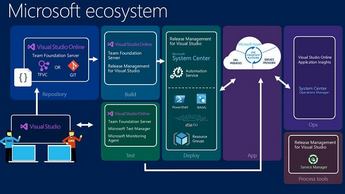






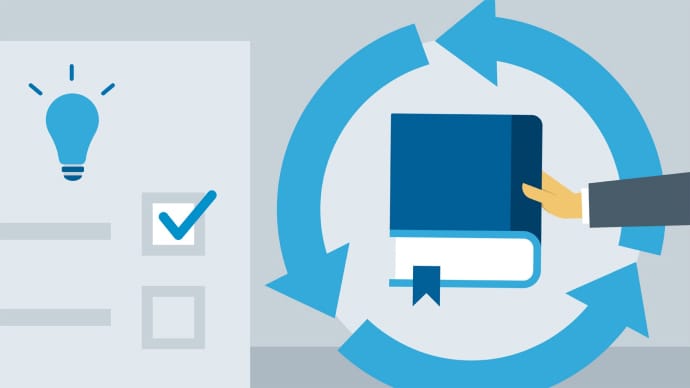
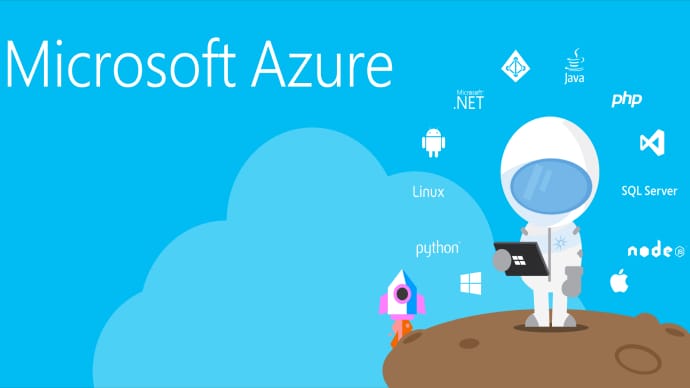


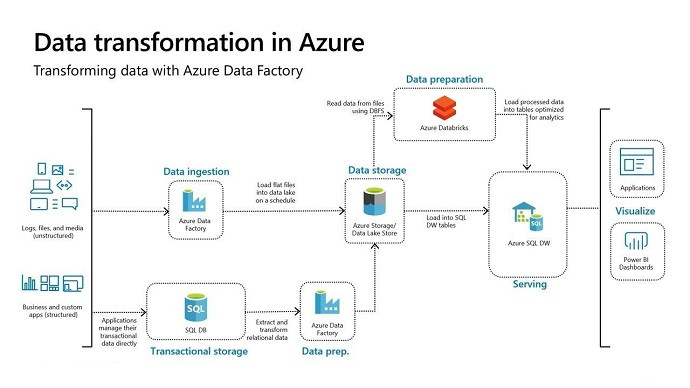









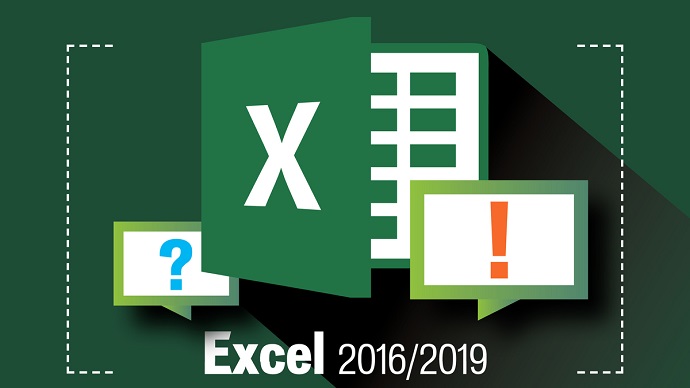


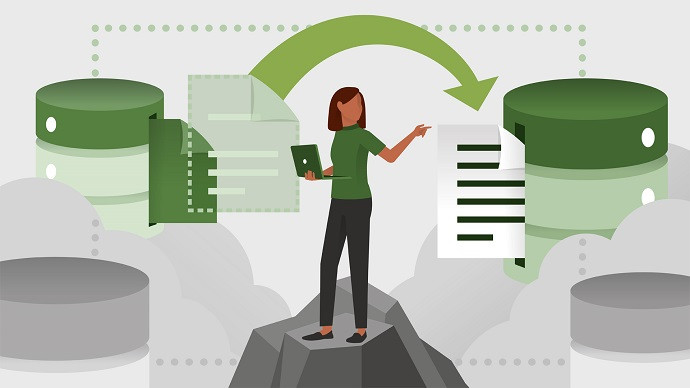


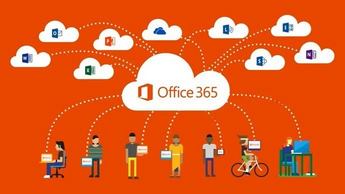
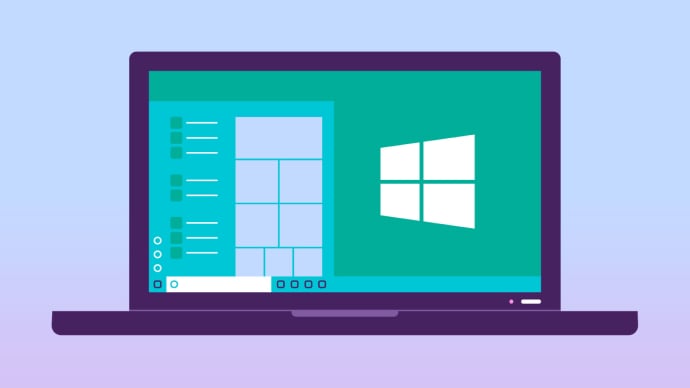






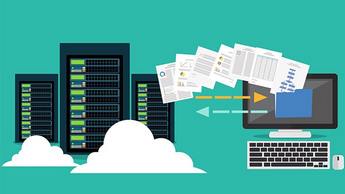

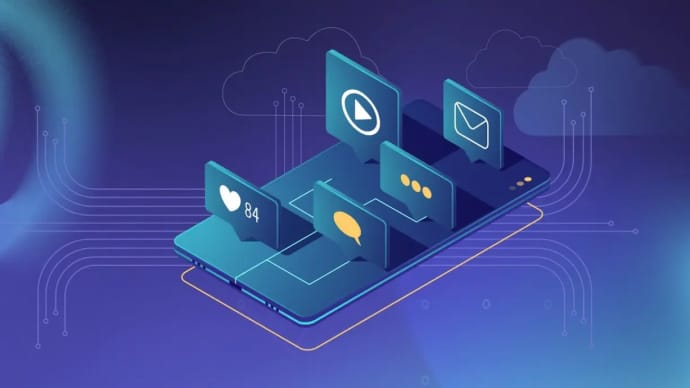
Only Registered Members can View Training Courses
Please fill out your email address below in order to view Training Courses. Registration is Free and Easy, You Simply need to provide an email address.
- Trusted by 1.2M IT Certification Candidates Every Month
- Hundreds Hours of Videos
- Instant download After Registration






